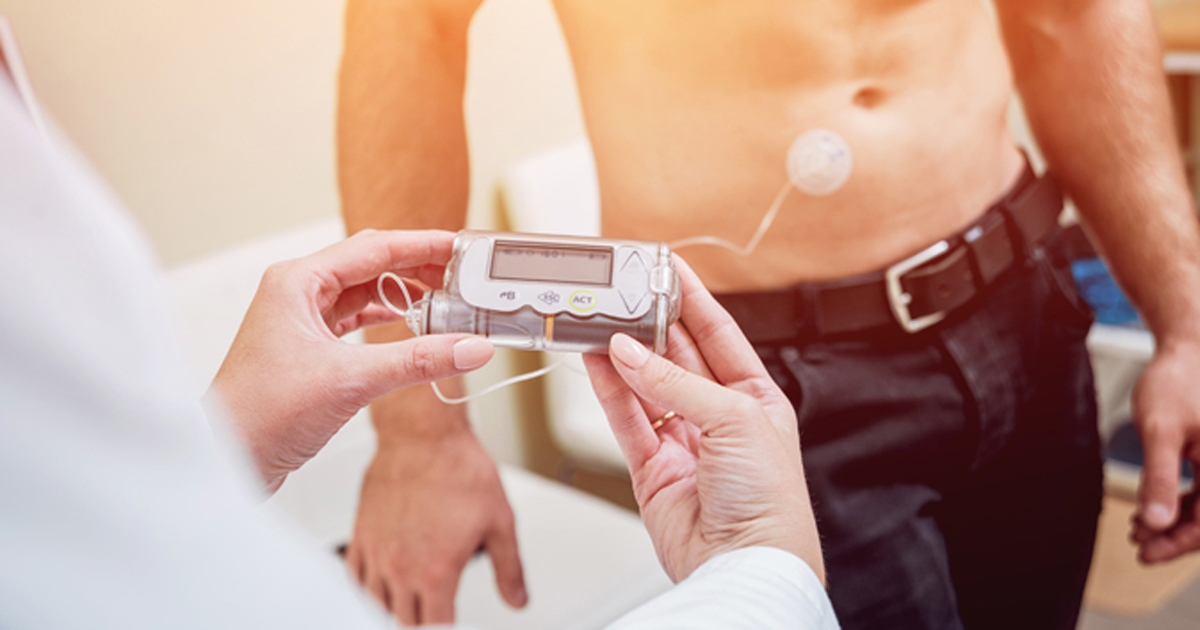BLOG: Spring forward all clocks, including insulin pumps
Sunday marks the start of daylight saving time. As has been the tradition of this Medblog since its launch in late 2016, every spring and fall, I have been posting notifications and warnings for people with diabetes using insulin pumps, their clinicians and their caregivers, to manually adjust the insulin pump clock time setting by 1 hour during the daylight saving time change.
For the spring daylight saving time change (usually, the second weekend of March), the time advances by 1 hour; the opposite occurs during the fall daylight saving time change (usually, the first weekend of November).
While the daylight saving time change often triggers discussions across the nation, including political and legislative debates about whether to eliminate this biannual ritual altogether, the impetus behind these biannual notifications on this blog is to educate clinicians and the public about critical technological glitches in insulin pumps. From case study research and a literature search we conducted at Michigan State University, we learned there is a knowledge gap: Many do not know or may ignore that, despite the technological advances in insulin pumps, the internal clocks of the pumps do not automatically adjust for the time change or for travel across time zones.
Insulin pumps deliver insulin in a bimodal manner, with continuous infusion of basal insulin and bolus insulin doses given in rapid infusion for meal coverage and for correction of high blood glucose. Both delivery modes are set up by time, with variable requirements. For example, a patient may require variable basal insulin infusion rates, per time of the day; typically, a person needs less basal insulin at night and during active physical status, such as during exercise. Also, mealtime bolus insulin doses may vary. Every patient is different when it comes to insulin requirements, insulin sensitivity or insulin resistance.

Correct insulin dosing is thus contingent on correct time setting in the insulin pump.
The above applies to almost all available insulin pumps for patient use.
Even the most recently introduced hybrid insulin pumps that have been in use for a few years, with an auto-mode insulin delivery feature, still have glitches related to time settings. For example, in the case of the most commonly used hybrid system, basal insulin delivery is automated, which is a nice feature. However, patients must remember to manually input personal data, such as grams of carbs and current blood glucose, into the system’s bolus calculator to receive insulin bolus doses before meals. The calculator uses preset settings for insulin to carb ratios and correction factors. Further, when patients are prompted back into manual mode, for any reason, the pump will return to work just like any other traditional pump — the internal pump clock still needs personal attention.
For reasons beyond the scope of this discussion, the insulin pump manufacturers have not equipped insulin pumps with automated internal clocks that would automatically adjust the time to synchronize with ambient time. Similarly, GPS technology is not incorporated into insulin pumps for various reasons.
Depending on the manufacturer, every time an insulin pump is restarted, or upon a battery change, the insulin pump time settings must be reset by the user.
Equally as important as the daylight saving time change is checking the pump for the correct a.m.-p.m. time setting. If this setting is flipped, then all daytime insulin doses will be delivered at night, and vice versa.
These glitches in insulin pumps’ time settings that result in incorrect insulin dosing can potentially cause hypoglycemia or hyperglycemia. I have seen multiple such cases in my practice since I have been made aware of these glitches, about a decade ago.
Until all current insulin pumps are replaced with artificial pancreas, we still need to pay attention to the time settings in insulin pumps. If the insulin pump time and date settings are not in synchrony with ambient time, there is a risk for erroneous insulin dosing in certain situations. As alluded to above, multiple cases of erroneous insulin doses encountered over the years have been discussed on this blog in previous posts as well as in a review article my colleagues and I published in 2014.
Reference:
Aldasouqi SA, et al. J Diabetes Sci Technol. 2014;doi:10.1177/1932296814541811.
Collapse
